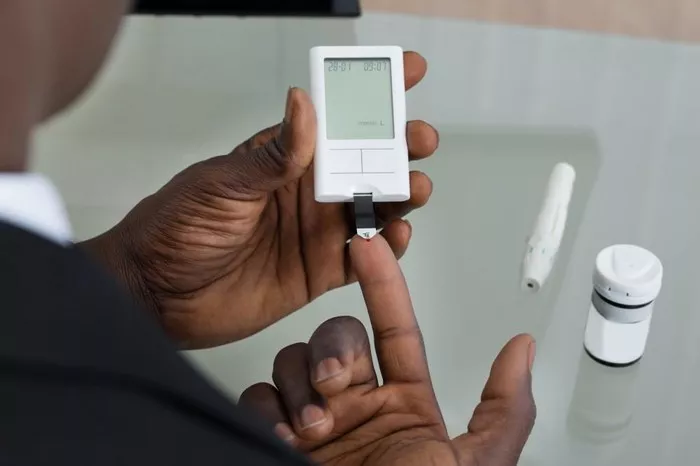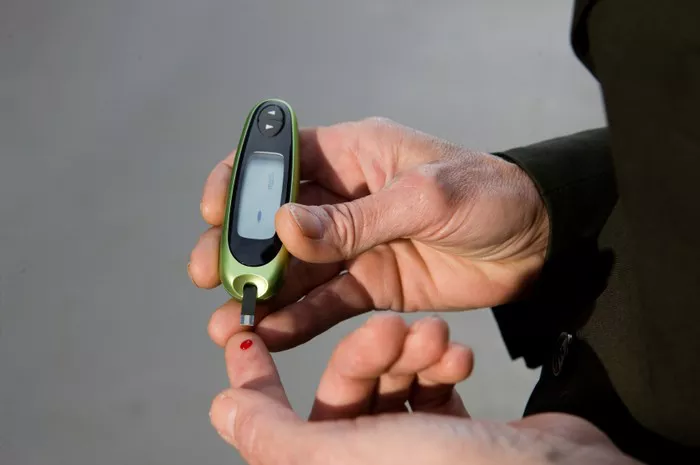Diabetes mellitus, a chronic metabolic disorder characterized by elevated blood glucose levels, manifests through a spectrum of symptoms affecting various organ systems. Among these, urinary symptoms play a significant role in both the diagnosis and management of the disease. Polyuria, the excessive production of urine, stands out as one of the hallmark manifestations of diabetes mellitus, affecting individuals across different age groups and ethnicities. This article explores the pathophysiology, clinical significance, diagnostic considerations, and management strategies related to polyuria in diabetes mellitus.
Diabetes mellitus represents a global health challenge, with its prevalence steadily rising over the past few decades. According to the International Diabetes Federation (IDF), approximately 537 million people were living with diabetes worldwide in 2021, and this number is expected to increase to 784 million by 2045 (IDF Diabetes Atlas, 10th edition). Type 1 diabetes mellitus (T1DM), previously known as insulin-dependent or juvenile-onset diabetes, is characterized by autoimmune destruction of pancreatic beta cells, resulting in absolute insulin deficiency. This form of diabetes typically presents in children or young adults but can occur at any age.
One of the cardinal clinical features of diabetes, especially T1DM, is the presence of polyuria. Polyuria refers to the passage of abnormally large volumes of urine, usually defined as exceeding 2.5 to 3 liters per day in adults. While polyuria is not specific to diabetes mellitus alone, its association with hyperglycemia and other metabolic disturbances distinguishes it as a crucial diagnostic clue in the context of diabetes.
Pathophysiology of Polyuria in Diabetes Mellitus
The pathophysiology of polyuria in diabetes mellitus primarily revolves around the dysregulation of glucose and water metabolism due to insulin deficiency or resistance. In T1DM, the destruction of pancreatic beta cells leads to an absolute lack of insulin production. Insulin plays a pivotal role in glucose uptake by peripheral tissues, including muscle and adipose tissue, and suppresses hepatic glucose production. Without adequate insulin, glucose accumulates in the bloodstream (hyperglycemia), exceeding the renal threshold for glucose reabsorption.
Under normal circumstances, the kidneys filter glucose from the blood into the renal tubules. In healthy individuals, virtually all filtered glucose is reabsorbed back into the bloodstream through the sodium-glucose co-transporters (SGLTs) located in the proximal renal tubules. The maximum renal reabsorptive capacity for glucose is approximately 180 mg/dL (10 mmol/L) in most individuals. When blood glucose levels exceed this threshold, as seen in uncontrolled diabetes, the excess glucose spills into the urine (glycosuria).
The presence of glucose in the renal tubules creates an osmotic diuresis, where water follows the glucose into the urine, resulting in increased urine volume. This phenomenon explains the polyuria observed in patients with diabetes mellitus, particularly when blood glucose levels are elevated chronically or acutely. The severity of polyuria correlates with the degree and duration of hyperglycemia, emphasizing the importance of glycemic control in managing this symptom.
Clinical Presentation and Diagnosis
Polyuria in diabetes mellitus manifests clinically as increased urinary frequency, urgency, and nocturia (awakening at night to urinate). Patients often report a sudden onset of these symptoms, especially if diabetes is newly diagnosed or poorly controlled. The volume of urine produced can vary significantly, ranging from mildly increased to several liters per day in severe cases.
Diagnosis of polyuria in the context of diabetes mellitus involves several key steps:
Clinical Evaluation: A thorough medical history and physical examination are essential to assess for symptoms suggestive of diabetes mellitus, including polyuria. Inquiring about urinary habits, fluid intake, and associated symptoms such as polydipsia (excessive thirst) can provide valuable clues.
Laboratory Investigations:
Blood Glucose Levels: Measurement of fasting plasma glucose and/or HbA1c levels helps establish the diagnosis of diabetes mellitus and assess glycemic control.
Urinalysis: Detection of glycosuria (glucose in the urine) using urine dipsticks or laboratory testing confirms the presence of hyperglycemia sufficient to cause renal glucose excretion.
Additional Testing: In cases where the diagnosis is unclear or complications are suspected, further investigations such as renal function tests (creatinine, electrolytes) and imaging studies (e.g., renal ultrasound) may be indicated.
Differential Diagnosis
While polyuria is strongly associated with diabetes mellitus, it is important to consider other potential causes, particularly in patients without known diabetes or those presenting with atypical features. The differential diagnosis of polyuria includes:
Diabetes Insipidus: A separate condition characterized by impaired secretion or action of antidiuretic hormone (ADH), leading to excessive urine output (polyuria) and polydipsia. Diabetes insipidus is differentiated from diabetes mellitus based on urine osmolality and response to ADH stimulation tests.
Medications: Certain drugs, such as diuretics (e.g., thiazides), can cause polyuria by altering renal tubular function and increasing urine output.
Renal Disorders: Conditions affecting renal function, such as chronic kidney disease (CKD), may present with polyuria due to impaired urinary concentration ability.
Psychogenic Polydipsia: Excessive fluid intake without a physiologic stimulus, leading to polyuria and potentially hyponatremia.
Endocrine Disorders: Hypercalcemia, hyperthyroidism, and adrenal insufficiency can manifest with polyuria as a secondary consequence of their effects on renal function.
Thorough clinical evaluation and appropriate diagnostic testing are crucial to differentiate these conditions and establish an accurate diagnosis.
Management of Polyuria in Diabetes Mellitus
The management of polyuria in diabetes mellitus focuses on addressing the underlying hyperglycemia and optimizing glycemic control. Comprehensive management strategies include:
Glycemic Control: Insulin therapy is the mainstay of treatment in T1DM to restore physiological insulin levels and normalize blood glucose concentrations. Initiating insulin therapy promptly after diagnosis helps reduce hyperglycemia-induced polyuria and associated symptoms.
Lifestyle Modifications: Patient education regarding dietary management, regular physical activity, and monitoring blood glucose levels are essential components of diabetes care. These measures promote glycemic stability and minimize fluctuations that contribute to polyuria.
Fluid Management: Encouraging adequate fluid intake while avoiding excessive consumption is important to maintain hydration without exacerbating polyuria. Patients should be educated about balancing fluid intake with urine output and adjusting based on individual needs.
Monitoring and Follow-up: Regular monitoring of blood glucose levels, HbA1c, and renal function is necessary to assess treatment efficacy and detect complications early. Close follow-up with healthcare providers allows for timely adjustments to treatment plans as needed.
Addressing Complications: Long-term complications of diabetes mellitus, such as diabetic nephropathy and cardiovascular disease, can impact renal function and exacerbate polyuria. Multidisciplinary care involving nephrologists, cardiologists, and other specialists may be required for comprehensive management.
Prognosis and Complications
The prognosis for polyuria in diabetes mellitus is generally favorable with early diagnosis and appropriate management. Effective glycemic control reduces the severity and frequency of polyuria episodes, improving quality of life and minimizing the risk of complications. However, untreated or poorly controlled diabetes can lead to persistent polyuria and contribute to the development of diabetic ketoacidosis (DKA), a life-threatening complication characterized by severe dehydration and metabolic derangements.
Chronic hyperglycemia and polyuria increase the risk of long-term complications, including:
Diabetic Nephropathy: Progressive kidney damage due to prolonged exposure to elevated glucose levels, leading to decreased renal function and potential end-stage renal disease (ESRD).
Cardiovascular Disease: Diabetes mellitus is a major risk factor for cardiovascular events such as myocardial infarction and stroke, exacerbated by uncontrolled hyperglycemia and associated metabolic abnormalities.
Neuropathy: Peripheral and autonomic neuropathies can develop, affecting sensory, motor, and visceral nerve function, including bladder control mechanisms.
Infections: Genitourinary infections, such as urinary tract infections (UTIs), are more common in individuals with diabetes due to immune dysfunction and glucose-rich urine promoting bacterial growth.
See also: Organic Honey And Diabetes
Conclusion
Polyuria remains a fundamental clinical manifestation of diabetes mellitus, particularly in individuals with T1DM characterized by absolute insulin deficiency. Understanding the pathophysiology of polyuria is crucial for its early recognition and effective management to mitigate its impact on patients’ health and quality of life. Diagnostic evaluation should encompass a comprehensive approach, integrating clinical history, laboratory testing, and consideration of differential diagnoses to ensure accurate diagnosis and timely intervention.
Management strategies for polyuria focus on achieving optimal glycemic control through insulin therapy, lifestyle modifications, and regular monitoring. Addressing complications associated with chronic hyperglycemia is essential to prevent long-term sequelae and improve clinical outcomes. Ongoing research efforts continue to refine our understanding of polyuria in diabetes mellitus, paving the way for innovative therapies and personalized treatment approaches in the management of this prevalent metabolic disorder.
In conclusion, while polyuria represents a common urinary symptom in diabetes mellitus, its significance extends beyond its clinical presentation, serving as a critical indicator of disease severity and metabolic control. By emphasizing early detection and comprehensive management, healthcare providers can enhance patient outcomes and promote long-term health in individuals living with diabetes mellitus.
Related topics:
What Are The Symptoms Of Type One Diabetes
























